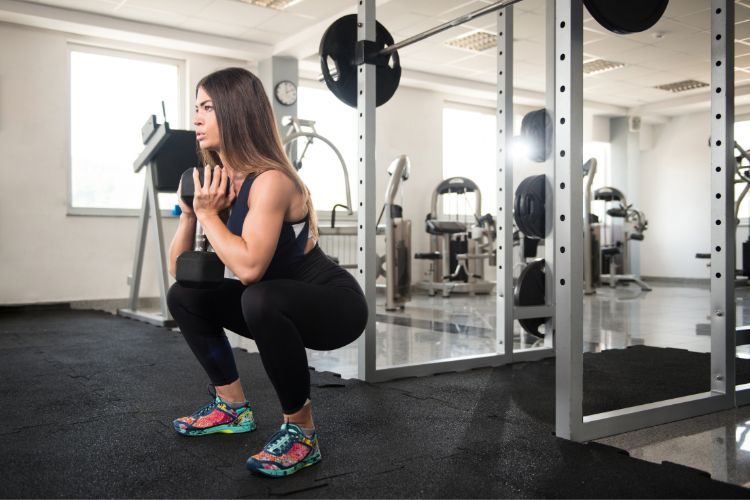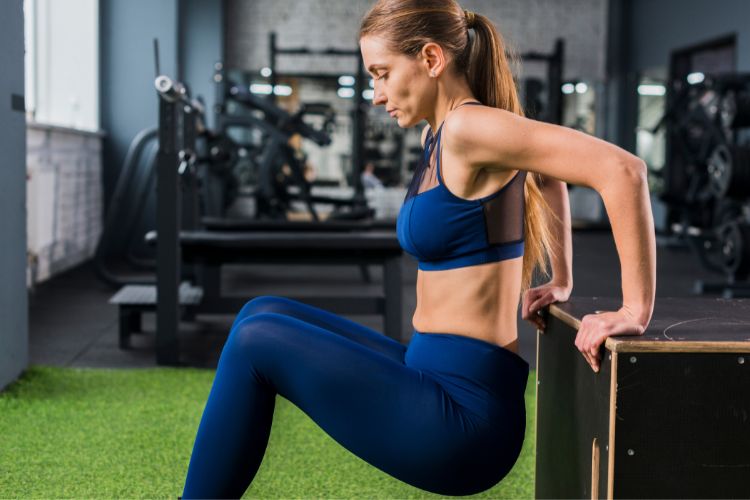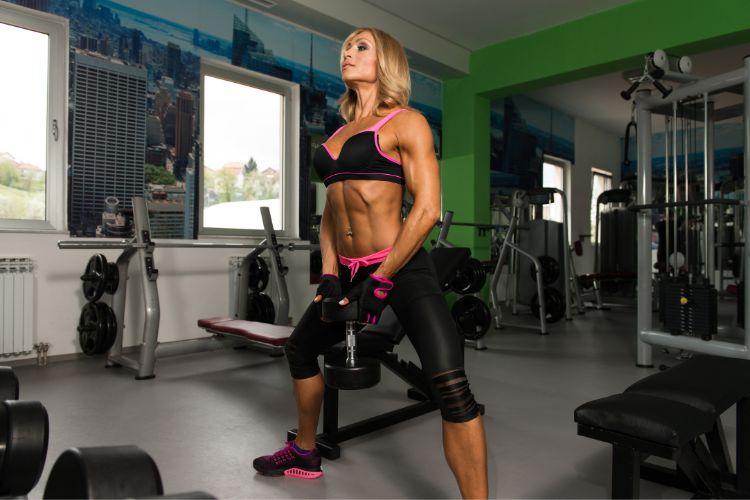Sign up for workout ideas, training advice, reviews of the latest gear and more.






Weight training has long been a domain mostly associated with men. The image of barbells, heavy plates, and bulging muscles may have deterred many women from approaching the weight section of the gym. But, times have changed. Functional weight training, an approach that focuses on building strength applicable to everyday movements, is increasingly gaining popularity among women, and for good reason.
Functional training involves exercises that enable you to perform daily life activities more easily and without injuries. Think about lifting a heavy grocery bag, carrying a child, or climbing stairs. These are movements we do every day. Functional weight training prepares your body for these activities, making them easier and more efficient.
Enhanced Daily Life Activities: Whether you’re picking up toys, carrying groceries, or lifting luggage into an overhead bin, functional training makes these tasks feel lighter and more manageable.
Improved Balance and Stability: Many functional exercises require balance. This not only strengthens the muscles but also enhances coordination and stability, reducing the risk of falls and injuries.
Holistic Muscle Engagement: Unlike some exercises that isolate specific muscles, functional training often engages multiple muscle groups simultaneously. This provides a more holistic workout, improving overall strength and endurance.
Boosted Metabolism: Weight training is known to increase metabolic rate, helping you burn calories even when at rest. For women, this can be a game-changer in managing weight and promoting overall health.
Bone Health: Especially crucial for women, lifting weights can increase bone density, reducing the risk of osteoporosis.
Start with Compound Movements: These are exercises that use multiple joints and muscles at once. Examples include squats, deadlifts, and lunges. They’re fantastic for burning calories and building functional strength.
Include Unilateral Exercises: These are exercises done on one side at a time, like single-leg deadlifts or one-arm rows. They challenge your balance and work on stabilizer muscles.
Integrate Movements: Think about everyday actions. A squat to overhead press mimics lifting something from the ground and placing it on a shelf above.
Vary Weights and Reps: Not every functional exercise needs to be done with heavy weights. Some days you can focus on lighter weights with more repetitions to improve muscle endurance.
Seek Expert Guidance: If you’re new to weight training, consider hiring a personal trainer or joining a functional fitness class. They can teach you proper form, which is critical to prevent injury and get the most out of your workouts.
Lifting makes women bulky.” Women typically have lower testosterone levels than men, making it harder to bulk up. Instead, weight training usually results in a toned and lean physique for women.
Cardio is enough.” While cardio is great for heart health and burning calories, weight training offers distinct benefits like muscle building, improved bone density, and a boosted metabolism.
I’m too old to start weight training.” It’s never too late! In fact, as we age, strength training becomes even more crucial to combat muscle and bone loss.
Over the past few decades, the perception of women in fitness has transformed remarkably. Initially confined to aerobics classes and the cardio section, women are now confidently claiming their space beside the weight racks, and it’s no mere trend. This shift is anchored in the recognition that strength and functionality are essential components of holistic fitness.
While both functional and traditional weight training are aimed at building muscle strength, their goals diverge somewhat:
Purpose: Traditional weight training often prioritizes aesthetics. For example, one might target the biceps for more prominent arm muscles. Functional training, on the other hand, prioritizes movements that are directly applicable to daily life.
Equipment: Functional workouts might use kettlebells, resistance bands, or even one’s body weight, emphasizing flexibility in equipment. Traditional weight training primarily utilizes dumbbells and barbells.
Engagement: Functional exercises tend to engage the core consistently, promoting better posture and overall balance. This consistent engagement isn’t always the primary focus in traditional weight training.
For many women, functional weight training becomes more than just a fitness routine—it morphs into a lifestyle. Here’s how:
Enhanced Mental Well-being: Strength training, like all exercise, releases endorphins, which act as natural painkillers and mood elevators. Many women report improved mental clarity and reduced feelings of anxiety and depression after adopting a functional training routine.
Confidence Boost: There’s a unique kind of confidence that comes from being able to carry out daily tasks without straining. Over time, as women master new skills and lift heavier weights, there’s an intrinsic boost in self-esteem.
Community Building: Joining functional training groups or classes often leads to forming tight-knit communities. The shared goals, mutual encouragement, and collective growth foster deeper connections among participants.
Every woman’s body and life demands are different, which means that functional training doesn’t have a one-size-fits-all approach.
For Mothers: Functional training can be a lifesaver. Movements that mimic lifting, holding, or carrying can be particularly beneficial, given the physical demands of motherhood.
For Office Workers: If you’re seated for most of the day, functional exercises that counteract the effects of prolonged sitting—like hip flexor stretches or back strengthening exercises—are crucial.
For Older Women: With age, the importance of maintaining muscle mass and bone density cannot be overstated. Functional exercises can be tailored to be gentler on the joints while still offering the benefits of strength training.
While it offers numerous benefits, like all exercise routines, it’s essential to approach functional weight training with safety in mind:
Warm-up and Cool Down: These are non-negotiable components. They prepare the body for the workout ahead and minimize post-exercise stiffness.
Maintain Form: Especially when lifting weights, proper form is critical. A wrong move can lead to strains or injuries.
Listen to Your Body: The difference between good pain (like muscle fatigue) and bad pain (like a sharp, sudden pain) is crucial. If something feels off, it’s okay to pause or modify the exercise.
Functional weight training offers a holistic approach to fitness for women, focusing on real-world applicability. By making this form of exercise a part of daily life, women are not only enhancing their physical strength but also fostering mental well-being, boosting confidence, and building communities. Whether you’re a young adult, a mother, or entering the golden years, functional weight training can be tailored to fit your unique needs, ensuring you lead a stronger, more empowered life.
Stay up to date on the latest women’s health, fitness and lifestyle trends and tips.